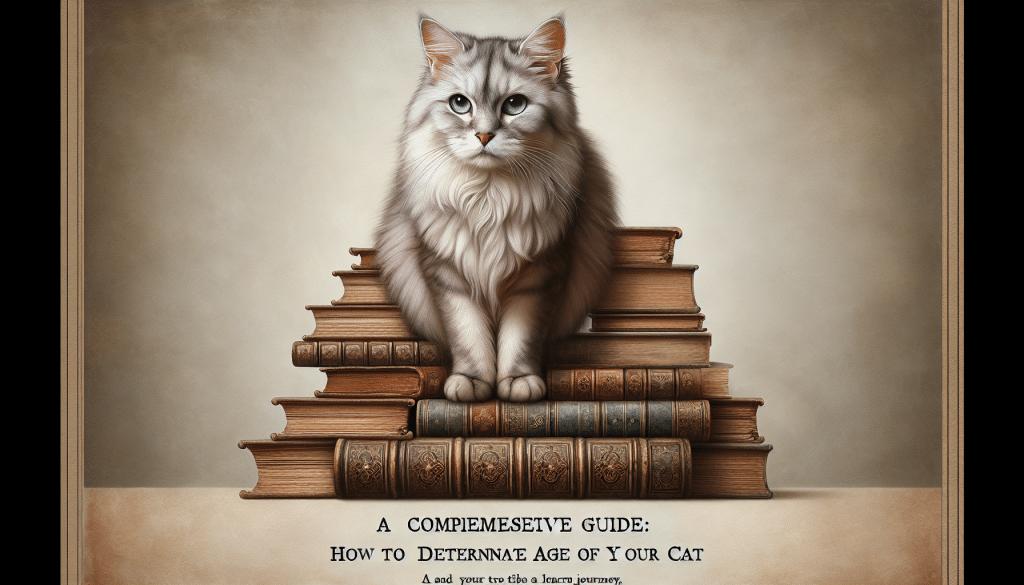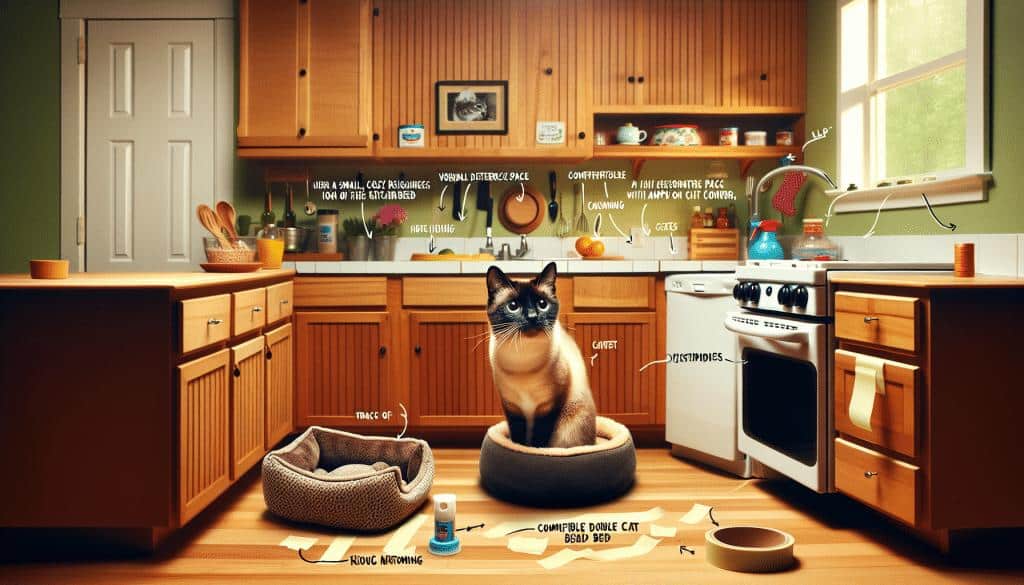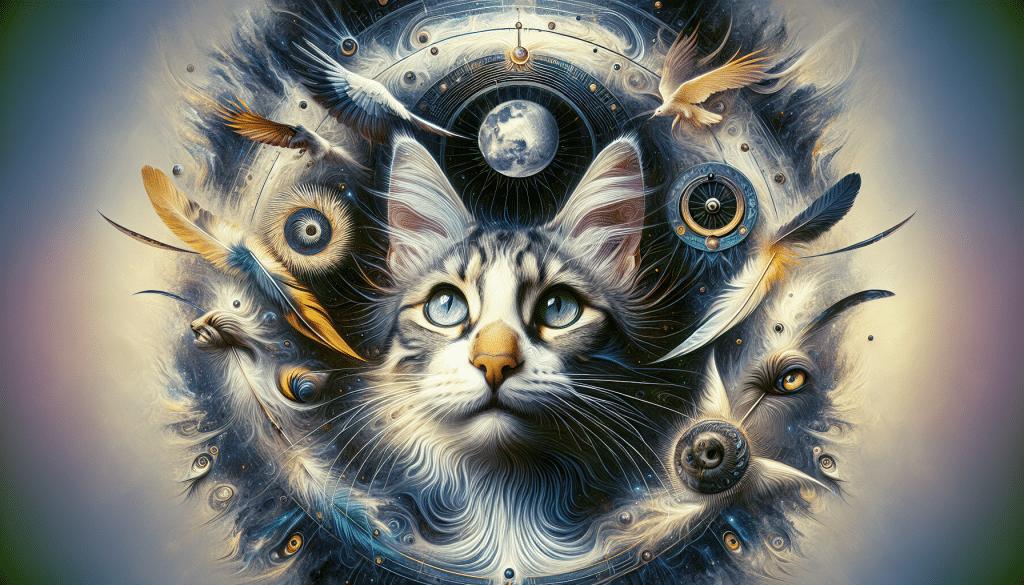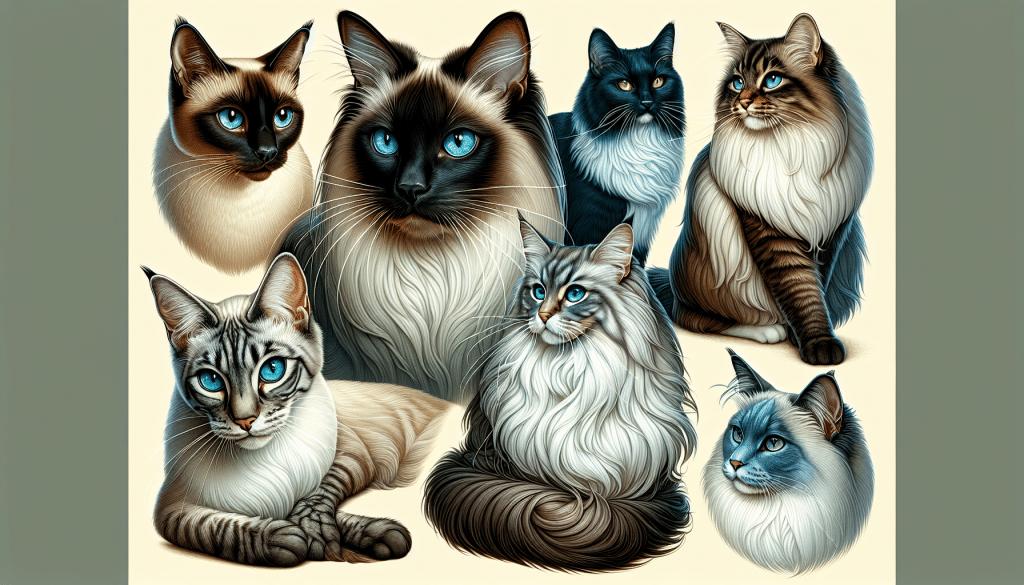So you’ve adopted a cat, but you’re not quite sure how old they are. No worries, we’ve got you covered! In this comprehensive guide, we’ll walk you through the various ways to determine the age of your feline friend. By examining their teeth, coat condition, and overall behavior, you’ll be able to get a better understanding of just how old your cat is. So grab a comfy seat, gather your cat detective skills, and let’s uncover the secrets of their age together!

Understanding the Process of Determining Your Cat’s Age
Necessity of knowing your cat’s age
Knowing your cat’s age is important for several reasons. Firstly, it helps you provide appropriate care and understand the specific needs of your cat at different stages of life. Secondly, it allows you to monitor any age-related health issues that may arise. Lastly, determining your cat’s age can also give you insight into their behavior and temperament, helping you tailor your approach to training and socialization.
Factors affecting the aging process in cats
The aging process in cats can be influenced by a variety of factors. Genetics play a role, with certain breeds having specific tendencies towards faster or slower aging. Environmental factors, such as diet, exercise, and stress levels, can also impact how quickly or slowly a cat ages. Additionally, a cat’s overall health and the quality of veterinary care it receives can affect the aging process.
Variability in aging among different cat breeds
Different cat breeds have varying life expectancies and may show signs of aging at different rates. For example, some breeds are known to have longer lifespans and may maintain their youthful appearance and activity levels for a longer period of time. On the other hand, certain breeds may be predisposed to age-related health issues and may start showing signs of aging earlier in life. Understanding the breed-specific characteristics and tendencies can help you better determine your cat’s age.
Physical Characteristics Indicative of Your Cat’s Age
Examining your cat’s teeth for age indication
One of the most reliable ways to estimate a cat’s age is by examining their teeth. Kittens have sharp, needle-like teeth that eventually fall out, making way for their adult teeth. By observing the growth and condition of the teeth, you can get a rough idea of your cat’s age. As they age, cats may develop dental issues, such as yellowing or tartar buildup, which can also provide clues about their age.
Significance of your cat’s coat and skin condition
Another physical characteristic that can be indicators of your cat’s age is the condition of their coat and skin. Kittens usually have soft and fluffy fur, while older cats may show signs of thinning, greying, or bald patches. Additionally, slow or incomplete fur regrowth after grooming or shedding can be an indication of an older cat.
Eye clarity as an age indicator
The clarity of your cat’s eyes can also provide insight into their age. Young kittens generally have bright and clear eyes, while older cats may start developing cloudiness or opacity in their eyes. This is often seen in senior cats and can be attributed to age-related changes in the lens of the eye.
Changes in body muscle and weight
As cats age, they may experience changes in their body muscle tone and weight. Kittens usually have a more slender and agile physique, while older cats may be less active and have a tendency to gain weight. Loss of muscle mass, particularly in the hind legs, can also be a sign of aging in cats. Paying attention to these physical changes can help you estimate your cat’s age.

Behavioral Changes as Signs of Aging in Cats
Behavioral changes as cats age
Just like humans, cats may exhibit behavioral changes as they age. These changes can be subtle or more pronounced, depending on the individual cat. Some common behavioral changes that can indicate aging include decreased activity levels, increased sleep time, decreased interest in play, and reduced grooming habits.
Changes in activity level and energy
A decrease in activity level and energy is a common sign of aging in cats. Senior cats may spend more time sleeping or have limited interest in physical activity. They may also become less agile and have difficulty jumping or climbing, compared to their more youthful counterparts.
Change in eating habits
An older cat’s eating habits may also change with age. They may become more finicky about their food, show a decreased appetite, or have difficulty chewing hard kibble due to dental issues. It’s important to monitor your cat’s eating habits and consult with a vet if you notice any significant changes.
Changes in sleeping pattern
Changes in sleeping patterns can also indicate aging in cats. While kittens and younger cats often have bursts of energy and engage in frequent play, senior cats tend to sleep for longer periods of time. They may prefer quiet and comfortable spots for their naps and sleep more during the day than at night.
Understanding age-related health issues and their manifestation
Aging cats are more prone to certain health issues, and understanding these can help in determining their age. Conditions such as arthritis, dental disease, kidney disease, and cognitive decline are more prevalent in older cats. Observing any signs or symptoms of these age-related health issues can provide additional clues about your cat’s age.
Professional Assessment and Vets’ Role in Age Determination
Importance of regular vet visits
Regular visits to the veterinarian are crucial for maintaining your cat’s overall health and well-being, as well as for determining their age. Vets have the knowledge and experience to accurately assess a cat’s age based on various factors, including physical appearance, dental health, and overall condition.
How vets determine a cat’s age
Vets use a combination of physical examinations, medical history, and diagnostic tests to determine a cat’s age. They assess factors such as dental development, body condition score, muscle tone, and any age-related health issues that may be present. Vets may also consider breed-specific tendencies and known health issues associated with certain age ranges.
Tools and techniques used by vets
Vets may use specific tools and techniques to aid in age determination. Dental charts and X-rays can be utilized to assess dental development and dental health, which can provide valuable information about a cat’s age. Blood tests, ultrasounds, and X-rays may also be used to evaluate an older cat’s overall health and identify any underlying age-related conditions.
Vets’ suggestions for caring for an older cat
Vets play a vital role in guiding cat owners on how to care for their aging feline companions. They can provide recommendations on nutrition, exercise, dental care, and other aspects of senior cat care. Vets may suggest specific diets or supplements tailored to an older cat’s nutritional needs, as well as provide guidance on pain management and maintaining a comfortable and enriched environment.

The Importance of Cat’s Age in Dietary Habits
Cats’ nutritional needs at different life stages
A cat’s nutritional needs vary depending on their life stage. Kittens require a diet rich in essential nutrients to support growth and development, while adult cats need a balanced and complete diet to maintain their overall health. Older cats have specific dietary requirements to support their aging bodies and manage age-related health issues.
How to adjust your cat’s diet as it ages
As your cat ages, it’s important to adjust their diet to meet their changing needs. Senior cats may benefit from diets that are lower in calories and fat to prevent weight gain, while still providing adequate protein, vitamins, and minerals. Additionally, senior cat foods often contain ingredients to support joint health and manage age-related conditions.
Exploring age-specific cat feeds
There are numerous age-specific cat feeds available on the market, designed to meet the nutritional needs of cats at different life stages. These feeds are formulated with specific levels of nutrients to support growth, adult maintenance, or senior cat health. Consulting with your vet can help you determine the most suitable age-specific cat feed for your feline companion.
Importance of hydration in older cats
Proper hydration is crucial for cats of all ages, but it holds particular importance for older cats. Senior cats may experience decreased thirst drive, and dehydration can lead to a range of health issues. Providing fresh water at all times and considering wet or moist cat food options can help ensure your aging cat stays adequately hydrated.
Consideration of Life Stage in Determining Your Cat’s Age
Understanding different life stages of a cat
Cats go through various life stages: kittenhood, adulthood, and their senior years. Each stage is characterized by specific physical and behavioral changes. Understanding these stages can assist in determining your cat’s age and also help you cater to their needs accordingly.
Characteristic features of kitten, adult, and senior cats
Kittens are typically small, playful, and have high energy levels. They have sharp baby teeth and are often seen exploring and learning about their surroundings. Adult cats are more settled, have a well-developed body, and may show a preference for specific routines. Senior cats exhibit signs of aging, such as greying fur, reduced muscle tone, and slower movement. They may also experience age-related health issues.
Behavioral changes across various life stages
Behavioral changes are common as cats progress through different life stages. From the energetic and playful nature of kittens to the more relaxed and independent nature of adult cats, and finally to the slower and less active lifestyle of senior cats. Understanding these changes can be helpful in estimating your cat’s age based on their behavioral patterns.
Relationship between Cat’s Age and Reproductive Status
Sexual maturity milestones in cats
Cats generally reach sexual maturity at around six months of age. At this stage, they become capable of reproduction and may display behaviors such as increased vocalization, spraying, or attempting to escape outdoors. Spaying or neutering your cat at an appropriate age can prevent unwanted pregnancies and certain health issues.
Age-related fertility changes in cats
Female cats have a limited reproductive lifespan, and their fertility decreases with age. As they grow older, they may experience reduced fertility and an increased risk of complications during pregnancy. Male cats, although able to father kittens throughout their lives, may experience a decline in fertility and reproductive performance as they age.
Dealing with reproductive health in older cats
When caring for an older cat, it’s important to consider their reproductive health. Female cats may require additional monitoring if they remain intact and continue to go through estrus cycles into their senior years. Male cats may require regular check-ups to assess their reproductive abilities and ensure their overall reproductive health.
Health Checks Specific to Older Cats
Common health problems in older cats
Senior cats are more prone to certain health problems than younger cats. Common age-related health issues in older cats may include arthritis, dental disease, kidney disease, hyperthyroidism, diabetes, and cognitive decline. Regular health checks are essential for detecting and managing these conditions.
Regular health screenings for older cats
Regular health screenings are crucial for older cats to identify and monitor any potential age-related health issues. These screenings may include physical examinations, blood tests, urine analysis, and other diagnostic procedures. Early detection of health problems can lead to better treatment outcomes and improved quality of life for aging cats.
Significance of blood tests, ultrasounds, and X-rays in elderly cats
Blood tests can provide important information about an older cat’s overall health and detect any age-related conditions or abnormalities. Ultrasounds and X-rays can be useful in evaluating internal organs, detecting tumors or growths, and assessing the skeletal system. These diagnostic tools are valuable in providing a comprehensive understanding of an older cat’s health status.
Importance of oral and dental care in aging cats
Oral and dental care is especially important in older cats. Dental disease is common in senior cats and can lead to discomfort, pain, and difficulty eating. Regular brushing of teeth, professional dental cleanings, and providing appropriate dental toys or treats can help maintain good oral health and prevent potential dental issues in aging cats.
Strategies for Taking Care of Your Aging Cat
Creating a safe and comfortable environment
Creating a safe and comfortable environment for your aging cat is essential. Provide them with a cozy bed, easy access to food and water, and litter boxes that are easily accessible. Consider providing ramps or steps to help them navigate furniture and ensure their living space is free from hazards that could cause injury.
Balancing physical activity and relaxation
It’s important to strike a balance between physical activity and relaxation for your aging cat. Encourage gentle play sessions to keep them physically active, but also give them plenty of opportunities to rest and relax. Provide comfortable resting spots, such as soft beds or heated pads, and allow for quiet time away from any noise or commotion.
Taking care of grooming needs
As cats age, they may require additional help with grooming due to reduced mobility or flexibility. Brushing your cat’s coat regularly helps remove loose hair and prevents matting. Trimming their nails, cleaning their ears, and wiping their eyes can also promote hygiene and prevent discomfort or infections.
Importance of mental stimulation and enrichment for senior cats
Mental stimulation and enrichment are crucial for maintaining your aging cat’s cognitive health and overall well-being. Provide toys that encourage mental engagement, such as puzzle toys or treat-dispensing toys. Regular play sessions and interactive activities, such as clicker training or teaching new tricks, can also help keep their minds sharp and stimulated.
Adopted Cats: Determining Age If History Is Unknown
Challenges involved in determining the age of adopted cats
Determining the age of an adopted cat can be challenging, especially if their history is unknown. Cats from shelters or rescue organizations may have limited or inaccurate information regarding their age. However, with careful observation and close examination of their physical and behavioral traits, you can still make an estimate of their age.
Using physical and behavioral clues for age estimation
Physical and behavioral clues can provide valuable hints when trying to estimate the age of an adopted cat. Dental condition, muscle tone, energy levels, and overall appearance can help in making an educated guess. Working with a veterinarian can further assist in narrowing down the age range based on their expertise and diagnostic tools.
Role of vet assessment in determining the age of adopted cats
A veterinarian plays a crucial role in determining the age of an adopted cat with an unknown history. They can perform a comprehensive physical examination, including dental inspection, to assess the cat’s age. Additional diagnostic tests, such as blood work or X-rays, may be recommended to gain further insights into the cat’s overall health and age-related changes. Consulting with a vet is an important step when adopting an adult cat with an unknown age.



